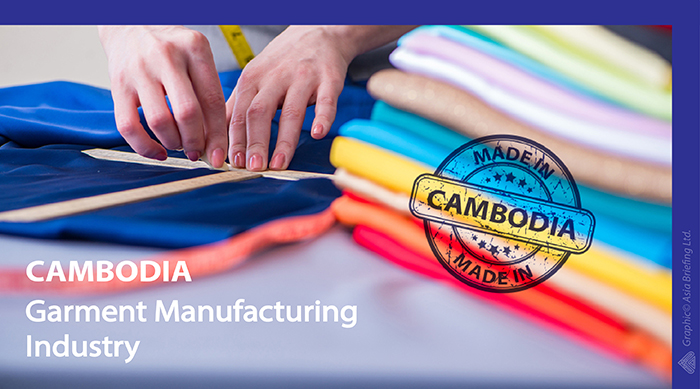Cambodia’s Role in Global Apparel Supply Chains
Cambodia has evolved into one of Southeast Asia’s most vital players in the global apparel supply chain. With its strategic location, preferential trade agreements, and a well-established manufacturing base, the Kingdom has become a favored destination for international fashion brands looking to diversify their production footprint. As global buyers seek to derisk supply chains post-COVID and amid geopolitical shifts, Cambodia’s role is set to grow even further.
This blog explores Cambodia’s strengths in the apparel sector, its contributions to the global supply chain, and why businesses should consider sourcing garments or investing in Cambodia with support from local experts like Cambodia-Agent.com.
An Export Powerhouse in Garments
The garment, footwear, and travel goods (GFT) sector is Cambodia’s largest industry and its most significant export engine. In 2023, Cambodia exported over $11 billion worth of garments, accounting for approximately 45% of the country’s total exports (Phnom Penh Post).
Key export markets include:
-
European Union (under the Everything But Arms (EBA) initiative)
-
United States
-
Canada
-
Japan
Cambodia benefits from preferential trade access, allowing duty-free or reduced-tariff exports to multiple countries under agreements like:
-
ASEAN Free Trade Area (AFTA)
-
China-Cambodia Free Trade Agreement
-
Regional Comprehensive Economic Partnership (RCEP)
These agreements enhance Cambodia’s competitiveness in the global apparel supply chain.
Why Cambodia Attracts Apparel Brands
1. Competitive Labor Costs
One of Cambodia’s most significant advantages is its affordable and abundant labor force. Compared to Vietnam, China, or Thailand, labor costs in Cambodia remain low, allowing brands to reduce production costs without compromising quality.
Moreover, the Cambodian government has increased the minimum monthly wage to $204 in 2024, balancing labor rights with global competitiveness (Khmer Times).
2. Experienced Workforce and Clusters
Cambodia’s garment factories are well-integrated into industrial clusters, especially in Phnom Penh, Kandal, Kampong Speu, and Sihanoukville. The workforce is familiar with handling large-scale orders for:
-
T-shirts
-
Sportswear
-
Casual fashion
-
Luggage and accessories
Major global brands such as H&M, Zara, Puma, and Adidas source from Cambodia either directly or through regional sourcing agents.
3. Strategic Logistics Location
Cambodia’s location in the heart of ASEAN provides seamless access to both raw material suppliers (China, Vietnam) and major global buyers. The development of modern infrastructure like:
-
Sihanoukville Autonomous Port (PAS)
-
The Phnom Penh-Sihanoukville Expressway
-
Expansion of dry ports and logistics centers
…makes Cambodia an increasingly efficient and reliable node in the global supply chain (PAS).
Challenges in the Cambodian Apparel Sector
1. Raw Material Dependence
One major limitation is Cambodia’s heavy reliance on imported raw materials, especially fabrics and accessories, primarily from China. According to DHL’s industry report, over 60% of textile inputs are imported (DHL Cambodia Textile Outlook).
This makes the industry vulnerable to:
-
Global shipping delays
-
Cost increases
-
Political tensions in supplier countries
Solution: The government and private sector are pushing for vertical integration, encouraging investment in local textile mills and dyeing facilities.
2. Labor Conditions and Compliance
International scrutiny around labor rights and factory conditions continues. Cambodia has made progress in improving labor laws, workplace safety, and social protections, but ongoing monitoring and compliance remain crucial for maintaining trust with global buyers.
Programs like the Better Factories Cambodia initiative, supported by the ILO and international donors, are helping to improve labor standards.
The Push Toward Sustainability
With global brands demanding greener supply chains, Cambodia is under pressure to adopt more sustainable manufacturing practices. Some factories have started to:
-
Install solar panels
-
Recycle wastewater
-
Reduce chemical usage
-
Implement digital inventory and waste management systems
According to a Fibre2Fashion report, the shift to eco-conscious operations is gaining momentum, and early adopters will be better positioned to win long-term contracts.
The Role of Agents in Apparel Sourcing
Navigating Cambodia’s apparel ecosystem can be complex. Language barriers, fragmented supply chains, and paperwork can slow down sourcing efforts.
That’s where sourcing agents come in.
A trusted sourcing partner like Cambodia-Agent.com provides:
-
Factory vetting and compliance checks
-
Sample collection and quality assurance
-
Cost negotiations and shipment coordination
-
Export documentation and logistics support
By working with a local agent, global buyers gain on-the-ground expertise, reliable communication, and reduced risk — especially crucial for first-time importers or SMEs.
Future Outlook
Cambodia’s role in the global apparel supply chain is poised to grow over the next decade. Several factors will drive this:
-
Diversification away from China: Brands are actively seeking to “China +1” their sourcing strategy, and Cambodia is a top contender.
-
Green finance and impact investment: Sustainability-focused investors are eyeing Cambodia’s evolving garment ecosystem.
-
Regional connectivity: With the RCEP and Belt & Road Initiative supporting infrastructure investment, Cambodia will benefit from better trade linkages.
Conclusion
Cambodia is no longer just a low-cost manufacturing hub — it is a vital part of the global apparel supply chain, offering flexibility, experience, and room for innovation. Whether you’re a global fashion brand, retailer, or distributor, sourcing garments from Cambodia can offer substantial value when managed correctly.
For tailored sourcing solutions, compliance assurance, and factory introductions, Cambodia-Agent.com is your trusted partner on the ground.
Related Resources:
